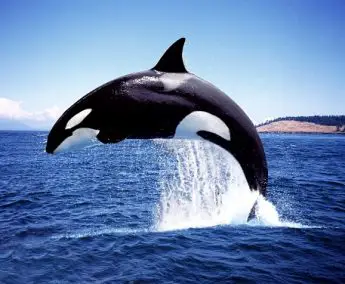Introduction
Quick Navigation
Marine life has always been a sight to behold because of the different varieties and species of fish and other creatures living in water. If you ask a random person what they would love to see underwater, there is a good chance that dolphins, sharks, seals, will be the major highlights. In all sincerity, they are great creatures that co-exist in the underwater world; however, they display certain characteristics for survival.
For some years now, Orca Whales and hunters have been killing Great White Sharks (Great Whites). It seems like they’ve become the prey, even with their reputation for being one of the dangerous animals as shown in movies like “Jaws.”
Great White Sharks hunt marine animals like dolphins, seals, etc., while maintaining a diverse and healthy ecosystem; thus, their presence comes with benefits. Therefore, it is important to investigate why sharks are being targeted alongside other vital things to know about their behavior, predator, and environment.
Let’s learn a little about Orca Whales and Great Whites.
Orca Whales
Also called Killer Whales. They are the largest member of the oceanic dolphin family, with a great speed of up to 35 miles/hour. This species of dolphins socializes in matrilineal pods, making their hunting pattern a bit fascinating. They prey on enormous marine creatures, such as dolphins, sharks, and seals.
Orcas can grow up to 30 ft., and weigh up to 14,000 lbs. They can be found in any ocean.
Great White Sharks
Also called Great Whites. They are also one of the largest marine creatures that can grow up to 20 ft., and weigh up to 4,000 lbs. Great White Sharks are primary predators and can be found in many of the world’s oceans. They can swim at 35 miles/hour.
Great Whites are solo hunters.
How Do Orca Whales Kill Great Whites?
There is a specific behavior that Orca Whales exhibit that makes it possible to attack Great Whites. They are fast and smart. They attack sharks in unimaginable ways. One common way is to drive sharks to the surface and swipe them using their tails from above.
When an Orca Whale holds a Great White upside-down, it can induce a paralytic toxin into their body, making them vulnerable. It is called “Tonic Immobility.” The effect of this toxin is the result of the damage done to a shark’s liver.
The first discovery of this behavior was in South Africa’s False Bay. There was a great number of dead sevengill sharks with their livers removed. At first, humans were thought to be responsible until they soon discovered that these killer whales attacked them.
Further research, observation, and sightings proved that Orca Whales were responsible for these acts in different locations of the world.
Why Orca Whales Feed on Great Whites?
Due to Scientific advancement, some things can now be explained. One of them is the reason why Killer Whales feed on Great Whites. With wound patterns and missing livers that were enough to work with, the dietary specialization of these creatures was discovered.
The surprising thing is: these whales leave every other part, including the heart and stomach. Bite marks were only found between the pectoral fins, which clearly shows that it was from a flat-toothed offshore whale.
After much research, it was discovered that Orca Whales prey on creatures with several rich blubber. In a nutshell, these whales kill sharks for their liver since it is rich in fats and oils.
Moreover, the active component of a shark’s liver is Squalene, known to be a good storage for energy and enables buoyancy if a swim-bladder ever gets absent or missing.
Additionally, Great Whites’ livers have a high concentration of lipid content, which ultimately means a higher energy density than the blubber of a regular whale.
If you put everything together, Orca Whales find a shark’s liver as the perfect energy source for survival underwater. Other mineral elements such as Fats, Proteins, Vitamin C, Vitamin A, Carbohydrates, Vitamin B6, Sodium, Niacin, Vitamin B12, Folate, and Iron can be derived from the liver.
It takes a Killer whale about 15 minutes to completely paralyze a shark before removing its liver.
How are Great Whites Adapting?
With a new predator in water, sharks haven’t been safe. However, one of their coping mechanisms was to create a bee-line when a pod of killer waters migrates to the area. Some of these sharks don’t even return; they mostly move to a new area.
See here on how to treat basic marine life injuries.
How Has Orca Whales Vs. Great Whites Affected the Ecosystem?
The predator-prey relationship has always been a way to maintain a stable and healthy ecosystem. It is no surprise that this phenomenon exists underwater.
Great Whites have been known to hunt seals so that their reduced population won’t put other types of fish at the risk of being prey.
However, with Orca Whales threatening sharks underwater, there is a bad knock-on effect on the ecosystem. Sharks are now unable to feed on seals as they use to, making these seals prey on fish easily. Ultimately, there will be a decline in the population of different species of fish.
These killer whales have created a landscape of fear so that other marine creatures like the Great whites will have to leave their territory.
Why Do Hunters Target Sharks?
Since Great White Sharks have been forced to move from their territory, they start migrating towards recreational waters. This location change, especially when it is close to the shore, has never been good to humans. Therefore, hunters are left with no choice but to target them.
Conclusion
If there is anything to conclude in this article, sharks themselves are prey. The frequent attacks on them are what led to the intensive research of this prey-predator relationship. Overall, the fear of getting killed by Orcas is why great whites have shown a consistent migration pattern over the years.

